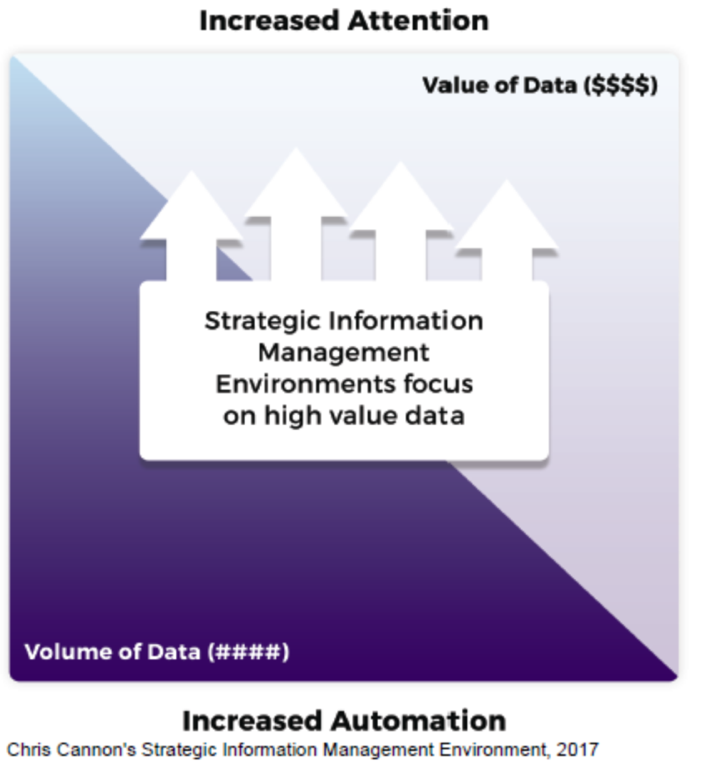Where We Are
2018 is a weird and wonderful time for advancement services.
On the wonderful side, the industry’s focus on new trends in data science, interoperability, social data management, and marketing automation have pushed advancement services into an increasingly bright spotlight. The truth is that attention to services (and improvements to status in shops, etc.) has grown incrementally for a few decades.
- Databases gave teams a shot at getting efficient.
- Reporting functions and online tools opened avenues to more colleagues and constituents.
- Peer-to-peer and social data tools are spawning innovative practices and tools at a tremendous pace.
These changes are allowing teams to expand: better budgets, better tools, and more variety in roles and responsibilities appear in reach.
Things might just be better than ever before.
On the weird side, best practices and reality remain much further apart than most folks want to admit. Survey data is proving over and over again that our team members want more, and our executives want better. Really cool new technology is available, but often at price that is hard to afford. Staff roles and practices sound great in Best Practices Case Studies, but are often an unattainable reality for the majority of our colleagues. Vast improvements to our models and business processes are often met with: “Great, can you now deal with…”.
How can we better align these things? How can more of us realize the potential in the field?
Our Reality & Planning for 2019+
The reality (and future) for advancement services is that the fundamentals—while streamlined and improved—remain the dullest, most frustrating, and the most important work we must manage.
Boring data entry, high volume automation, and daily maintenance fuel fundraising. Advancement Services, most days, is like shoveling sand on the beach. (And, as always, at least we’re on the beach!) Although we must shovel all day, every day, we can do some shaping and sculpting, resulting in some pretty amazing outcomes. I state these somber things with tough love.
The best possible outcome from the daily grind and the occasional innovation is realized by fostering a strategic information management environment. I wrote a chapter on the topic for AHP (here) that starts with being focused on the fundamentals. More bluntly:
You. Must. Get. The. Data. Right.
As the data are being improved, essential high volume and high value processes must be streamlined. Once fundamentals are fixed, there are options for the future.
Through strategic information management, there is hope that advancement services can continue its ever-expanding role in helping organizations raise more money and build better relationships. This will require innovation, expansive growth, and a constant evolution of the value proposition for great advancement services. The image below depicts the best hope for our profession to maintain its path of improving advancement.

Build Impact: The good news is that all advancement services folks can help build an environment for strategic information management. Again, the better the data, the better the support from all sides—great data and great impact are symbiotic in that way.
Be Persuasive: We must convince our executives that anecdotal issues and errors should not direct us. Instead, established metrics—including standards for front of the line constituent data—must be marketed internally.
Cultivate Trust: And, finally, we must be trusted. Being accountable and action-oriented is essential to gain trust.
This means:
- Mistakes can happen; fix them.
- Processes can fail; re-engineer them.
- Relationships can be strained; repair them.
Overall, in 2019 and beyond, expect to be held accountable for the details and the day-to-day, but make time to adopt innovations where they can yield positive results with data processes and health.
Could your team use help making plans for the coming year? We can help!
 Chris is President of Strategic Services at Zuri Group. His areas of expertise include fundraising strategy and systems, staff and resource management, database management, business intelligence and data reporting, database conversion projects, gift and data processing, and technology needs.
Chris is President of Strategic Services at Zuri Group. His areas of expertise include fundraising strategy and systems, staff and resource management, database management, business intelligence and data reporting, database conversion projects, gift and data processing, and technology needs.
